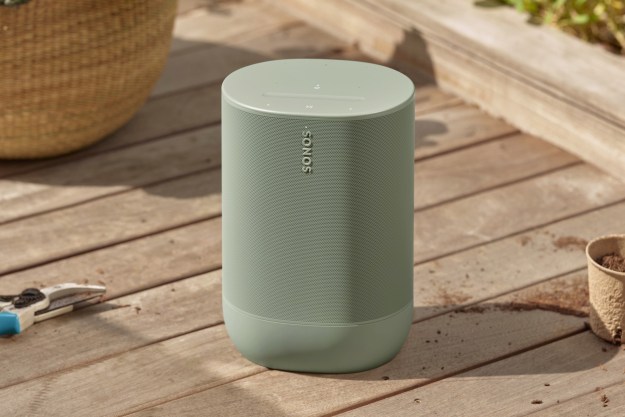For years, Sonos steadfastly refused to support hi-res music formats on its massively popular line of wireless speakers. Today, that finally changes: All Sonos users who are currently running the S2 version of the company’s software will be able to stream hi-res music from Qobuz, with a valid subscription. Qobuz debuted its streaming music service in the U.S. in 2019.
With a Qobuz subscription, which starts at $15 per month, those who own one or more compatible Sonos products will be able to play hi-res streams at 48kHz/24-bit quality, marking the first time that Sonos speakers have been able to play better-than-CD-quality music. At the moment, the S2 software will support 48kHz/24-bit streams from Qobuz or 48kHz/24-bit music files from people’s personal audio collection.

Compatible products include the Arc, Beam, Five, Move, One, One SL, Port, Amp, Symfonisk Bookshelf, Symfonisk Table Lamp, Playbar, Playbase, and Play:5 (Gen 2). The forthcoming Sonos Roam will also be hi-res compatible. Notably absent from the list is the Sonos Play:1, and yet this older speaker is still compatible with the S2 software. Sonos tells us that in situations where people try to stream hi-res audio to a non-hi-res Sonos speaker (whether on its own or grouped with hi-res capable devices), the non-hi-res speaker will get a 16-bit version of the song, while the compatible products will get the 24-bit version.
Hi-res music is regarded by many as superior to both CD audio as well as virtually all lossy digital formats like MP3 and AAC because it captures and retains more information about the original song. To hear hi-res music, you need a source — like a streaming music service or your own collection of hi-res tracks — and a device that is capable of decoding and playing these tracks. Given that CD audio is captured at a sample rate of 44.1kHz and a sample size of 16-bits, anything that captures and preserves more data than this is usually considered hi-res.
However, it’s worth noting that the Japan Audio Society, which maintains the definition of what qualifies as hi-res audio, claims that any 24-bit file with a sample rate of less than 96kHz does not qualify.

When Digital Trends asked Sonos why hi-res support is currently limited to 48/24, a spokesperson told us that higher-quality tracks are “not widely supported by streaming services. We’re continuing to watch how high-resolution audio evolves and will explore changes to our platform over time.” We’re not entirely sure we agree with this statement. While it’s true that Apple Music and Spotify (and even the upcoming Spotify HiFi) do not support hi-res audio at all, Tidal, Qobuz, and Amazon Music HD all offer hi-res tracks at 96kHz/24-bit (or better) quality.
Now that Sonos has (more or less) joined the hi-res music party, the question is whether and when it will expand this support to higher quality versions of hi-res, other streaming services beyond Qobuz.
We’ll let you know as soon as Sonos has more to say on these issues.
Editors' Recommendations
- Sonos app gets a major overhaul as the company prepares for next-gen products
- What is Tidal? The hi-fi streaming music service fully explained
- Tidal has rolled all of its premium features into its $11 per month plan
- JLab jumps into hi-res and Bluetooth LE audio with $200 Epic Lab Edition earbuds
- Earfun makes hi-res audio more accessible with affordable earbuds and DAC



